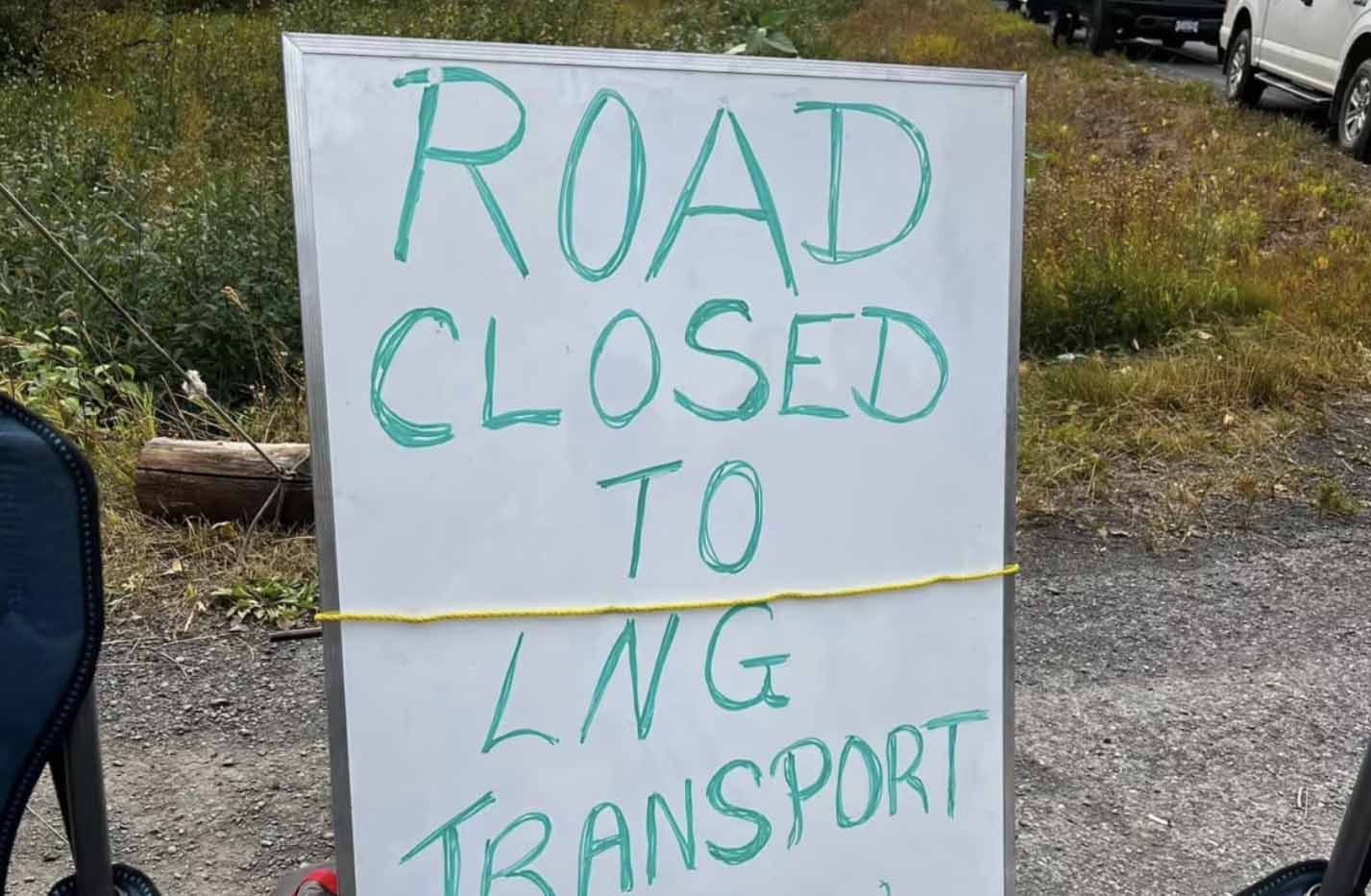Construction proceeding despite Gitanyow protest, says president of Nisga’a Government, which co-owns project
Gitanyow hereditary chiefs and a group of young Indigenous people have blockaded a forest service road in northern B.C. in an attempt to prevent pipeline construction workers from passing through their territory.
The Gitanyow chiefs say they are concerned the Prince Rupert Gas Transmission (PRGT) pipeline will affect fish in the Kispiox River and are calling for an updated environmental assessment.
The project was purchased by the Nisga’a Nation and Western LNG from TC Energy in March.
The plan is for the pipeline to transport natural gas from northeast B.C., near Hudson’s Hope, to Prince Rupert on the North Coast, according to B.C.’s Ministry of Environment and Climate Change Strategy.
Construction on the pipeline began on the weekend. A blockade was set up last Thursday and groups are still taking turns blockading different checkpoints on the Cranberry Connector — which links Highway 16 at Terrrace and Highway 37 at Cranberry Junction — in an attempt to prevent access to a work camp site, according to the Skeena Watershed Conservation Coalition.
“We are not going to sit back and watch them destroy and try and force this project down our throats,” Gitanyow Hereditary Chief Wil Marsden told CBC News.
Despite the blockade, construction is moving forward, according to Eva Clayton, president of the Nisga’a Government.
“We do respect our peaceful and lawful protest, but those who block roads do not represent the majority of all of us who are excited about this Indigenous-owned gas pipeline,” she said.
‘I’m scared for my future’: youth organizer
Clayton said many Indigenous communities along the route of the proposed pipeline have been consulted, and that she’s “quite disappointed” by the response of people who oppose the project.
“But we are optimistic that they’ll accept our offers for dialogue and to assess their project agreement,” she said.
Last week, about 300 people attended a meeting on Gitxsan territory organized by young people pledging to put an end to the pipeline, according to a news release from the Skeena Watershed Conservation Coalition.
“The youth and future generations were left out of [the pipeline] conversations, and I’m scared for my future,” said youth organizer Drew Harris.
“Our rivers are drying up. Our fish counts are going down. Climate change is here … I just want you to remember we don’t own the land, the land owns us … if we continue to contaminate our waters, pollute our air and deplete our food sources, where does that leave us?”
Environmental assessment
The project received an environmental assessment certificate in 2014, according to the province. But much has changed since then, including the impacts of climate change, said Marsden.
“The last thing we should be trying to do is get the pipeline going,” he said.
In 2019, TC Energy received a five-year extension to the environmental assessment certificate, which expires this November unless the Nisga’a-Western LNG partnership can demonstrate the project has been “substantially started,” according to the province.
In a statement, B.C.’s Minister of Environment and Climate Change Strategy George Heyman said his government is “committed to upholding robust environmental protections and strong partnerships with First Nations.”
He said the province’s Environmental Assessment Office is currently undertaking an environmental assessment amendment review to assess any potential effects related to the proposed amendment for the PRGT project. This includes consulting with First Nations, the federal government and the public, he said.
“We will ensure that the Gitanyow continue to have opportunities to provide information, that information will be reviewed as part of the environmental assessment process. We will continue to work with the Gitanyow and others as the environmental assessment continues,” Heyman said.
Read the original article by CBC News with files from Hanna Petersen.
